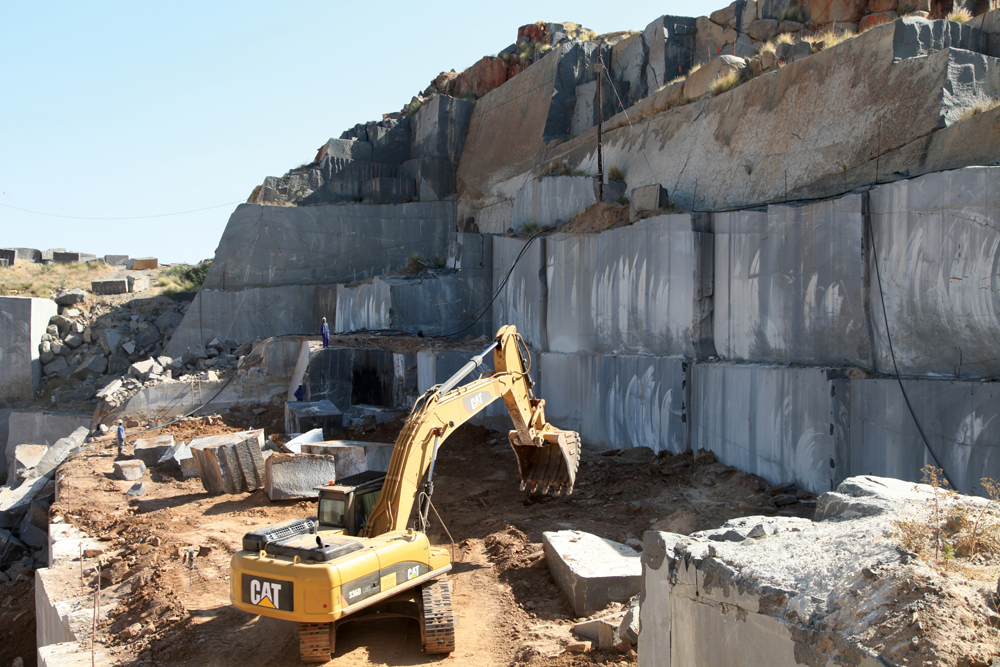Unlocking Natural Treasures: Granite Quarries in South Africa Revealed
Unlocking Natural Treasures: Granite Quarries in South Africa Revealed
Blog Article
Unearthing the Rich Background and Sustainable Practices of Granite Quarrying
As we depend on the precipice of discovering the detailed tapestry of granite quarrying, a journey via time exposes not simply the physical act of drawing out rock but likewise the cultural and historical importance woven right into the extremely material of this practice. From the ancient origins that laid the structure for contemporary quarrying strategies to the lasting methods that are shaping the future of this industry, each carve mark on granite surfaces narrates waiting to be unearthed (granite quarries in south africa). The tradition of granite quarrying extends much beyond simple removal; it is a testimony to human ingenuity, resilience, and the long-lasting attraction of this impressive stone
Ancient Beginnings of Granite Quarrying
Going back to old civilizations, the method of quarrying granite has been an important component of human background and architectural development. The earliest proof of granite quarrying dates back to ancient Egypt, where large pyramids and intricate sculptures were crafted from this durable stone. The Egyptians used primitive tools to draw out granite blocks from quarries, showcasing the value of this product in their huge building and constructions.
Relocating onward in background, the Greeks additionally made significant contributions to the quarrying of granite. The Greeks used granite in various architectural wonders, such as holy places and statuaries, showing their ability in shaping and sculpting this durable rock. The Romans further refined the techniques of quarrying granite, utilizing sophisticated devices like blades and hammers to remove and shape granite for their renowned structures.
With the centuries, the method of quarrying granite has developed, with contemporary innovations improving effectiveness while preserving the classic allure of this all-natural stone - granite quarries in south africa. From ancient worlds to contemporary contractors, the tradition of granite quarrying proceeds to form our globe
Advancement of Quarrying Strategies
The advancement of quarrying strategies has been marked by a constant progression in the direction of greater efficiency and accuracy in removing granite. From the rudimentary methods employed by our forefathers to the advanced technologies utilized in modern-day quarrying procedures, the industry has actually gone through significant innovations. Early quarrying methods involved manual work with basic devices such as blades, hammers, and wedges to extract granite blocks from the planet. As worlds proceeded, methods like fire-setting and primitive explosives were presented to facilitate the extraction procedure.
Advancements in computer-controlled tools and 3D modeling have actually optimized quarrying operations, leading to minimal environmental impact and improved sustainability practices. As the need for granite proceeds to climb, the advancement of quarrying strategies continues to be indispensable to conference market needs effectively and sustainably.
Cultural Importance of Granite
Granite holds an extensive cultural value throughout different civilizations due to its long-lasting presence in building masterpieces and revered monoliths. The cultural value of granite prolongs past its physical qualities; it embodies strength, stability, and timelessness, making it a sign of withstanding legacies and traditions.

Sustainable Practices in Quarrying
Amidst the abundant background of granite quarrying and its social relevance exists an expanding focus on sustainable practices within the learn this here now industry. As environmental awareness and issues about resource deficiency have actually increased around the world, the quarrying sector has actually significantly welcomed lasting techniques to reduce its influence on the setting and bordering neighborhoods.

Furthermore, reclamation and rehab of quarry sites post-extraction are essential to sustainable practices. By restoring quarried areas to a natural or useful state, such as producing wildlife habitats or recreational spaces, quarriers can offset the ecological impact of their procedures and add positively to the regional community.
Tradition of Granite Quarrying
With a historical backdrop soaked in workmanship and commercial development, what withstanding impact has granite quarrying left on the landscape of modern culture? The heritage of granite quarrying goes beyond simple extraction practices; it has actually shaped architectural wonders, metropolitan landscapes, and cultural heritage worldwide. The durable nature of granite has actually made it a recommended selection for monuments, structures, and infrastructure, standing as a testament to the ability and creativity of quarry workers throughout generations.
Additionally, the economic impact of granite quarrying can not be ignored. The market remains to give job opportunity and drive neighborhood economic situations in regions where granite extraction prevails. It has also stimulated technological advancements in quarrying strategies and click to find out more devices, leading to a lot more efficient and lasting practices.
In regards to sustainability, the legacy of granite quarrying includes initiatives to mitigate environmental influences through improvement tasks and responsible resource monitoring. By stabilizing economic rate of interests with ecological stewardship, the industry makes every effort to guarantee that future generations can proceed to take advantage of this long-lasting natural resource.
Verdict

Report this page